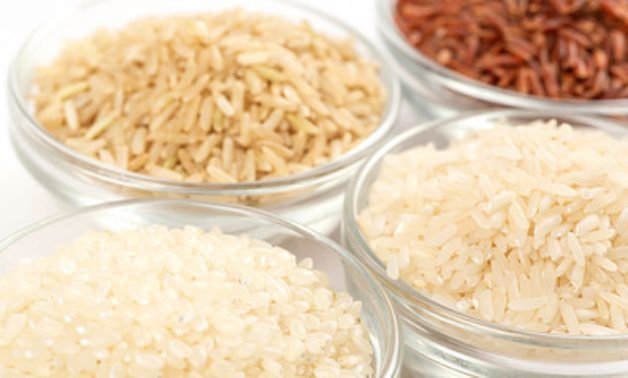
Long rice, round rice, unpolished and brown rice varieties- CC via Flickr/ Marco Verch Professional Photographer
CAIRO- 28 August 2022: The Egyptian government issued a decree, per which farmers shall deliver barley rice during the current season and until mid-December, to make it available for the public on the ration cards.
The decree was published in the official gazette “Al Waqa’e Al Masryiah” on August 28 to be enacted on the following day.
The barley rice will be received at a price of 6,600 per tonne of fine-grain rice, and 6,850 per tonne of wide-grain rice. More than 150 places were allocated to receive the rice imported from the local farmers as each farmer shall provide one tonne for each feddan (25% of the feddan productivity).
The Minister of Supply said that farmers will receive the financial dues within 48 hours.
However, the farmer, who would abstain from exporting rice to the Ministry, will be penalized by not allowing him to plant rice in the following year, in addition to not disbursing subsidized fertilizers and agricultural pesticides for a period of one year to all types of crops.
Also, the price of undelivered barley rice will be LE 10,000 per tonne, the decree said.
The Ministry is targeting 1.5 million tonnes of barely rice to meet the people’s needs.
Head of the Rice Division at the Federation of Industries Rajab Shehata said that rice prices will be affordable for the citizens at the beginning of September. He noted that one kilo of rice would cost LE 12. The current price is at LE 19.
The reasons for high prices include the high cost of fertilizers, high costs of shipping and transportation, global inflation that was caused by the ongoing Russian-Ukrainian conflicts, Sada El Balad reported.
Also, a shortage in rice supply is one of the other reasons, Magdy, a member of the Board of Directors of the Chamber of Grain Industry in the Egyptian Federation of Industries, told Masrawy.
Egypt had a challenge to increase the cultivated areas of rice, amid water stress but scientific research and studies developed new seeds and varieties adapt to climate change and water scarcity, said Muhammad Al-Qarsh, spokesman for the Ministry of Agriculture
He added in comments to Masaa DMC" program with the media on Sunday that the Egyptian state attached a great importance to agriculture, explaining that this appears in increasing the productive area in Egypt and maximizing the productivity of the land and water unit.
He noted that water that was allocated for irrigating rice enabled farmers to plant 724,000 feddans, plus planting 350,000 feddans with the salt-tolerant varieties and the length of irrigation periods, totaling the whole cultivated areas to 1.1 million feddans, which makes the state meet the needs of the citizen.
Comments
Leave a Comment